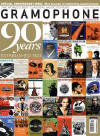Texte paru dans: / Appeared in:
*

GRAMOPHONE (04/2013)
Pour s'abonner /
Subscription information
Nimbus
NI6207

Code-barres / Barcode : 0710357620720
Reviewer: Jed
Distler
Nimbus reissues
Feltsmanís 1999 Bach Partitas taping
Vladimir Feltsmanís 1999 Bach Partitas first appeared around a decade ago
on the Urtext label, coupled with the same composerís Two- and Three-Part
Inventions. Although only the Partitas resurface on this Nimbus release,
Feltsmanís inspired performances surely wonít make listeners feel
short-changed. In a 1993 masterclass Feltsman encouraged his young pupils to
communicate each Partita movementís dance origins, and thatís exactly what
his buoyant tempi for the Courantes and Menuets convey. He also practises
what he preached about having fun with repeats by varying the voicings,
accents and articulations. Astute ears will also pick up on Feltsmanís
transposing certain phrases up or down an octave, albeit to a far more
discreet degree than his compulsive register-jumping in the Goldberg
Variations.
Feltsmanís imaginative and creative ornaments and embellishments consistently delight and surprise. Notice, for example, the uncommon sense of musing and introspection in the Prelude of the C minor Partita, the rhapsodic briskness of the B flatís Sarabande or the effectively brusque rolled chords and trills in the D majorís Courante and Aria. You may not get painstaking dynamic gradations or micro-managed contouring of lines in the manner of pianists as disparate as Schiff and Tureck but you wonít find many piano versions of the Bach Partitas where joyous musicality, communicative immediacy and fervent commitment emerge to Feltsmanís consistent degree. Jed Distler Selected comparisons: Schiff (12/09) (ECM) 476 6991 Tureck (DORE) DHR7826/7
Second instalment for Bissís Beethoven sonata cycle The second volume of Jonathan Bissís Beethoven cycle for Onyx begins with the Op 7 Sonata, where the first movement grabs your attention by virtue of the pianistís lean sonority, linear clarity and headlong yet controlled brio. Rapt concentration and strong dynamic contrasts prove no less riveting in the Largo. Bissís sensitively sculpted Allegro is a tad careful and square when measured alongside Stephen Kovacevichís over-the-bar-line animation but the Rondo stands out for the pianistís lyrical inflections and strongly anchored bass-lines. Compared to the polished yet glib G major Fantasy that opened his 2005 EMI debut, Bissís remake digs deeper into detail, such as the added breadth in the introductory episodeís quieter moments and the stronger melodic profile of the arpeggios in the B major section.
Biss brings graceful simplicity to the Moonlight Sonataís celebrated opening Adagio and plays the Allegretto with chamber-like attention to inner counterpoints. Collectors recalling Wilhelm Kempffís intimately scaled and thoughtfully nuanced Presto will appreciate Bissís approach, although itís certainly less agitato and fierce in the manner of, say, Garrick Ohlsson or Stewart Goodyear. Biss is at his best in the little Op 78 Sonata. He unfolds the first movementís rotary patterns with feathery suppleness and songful momentum, while bringing just the right rollicking character, lightness and witty timing to the finale, especially in the composerís quick shifts from major to minor mode and back again. In sum, Bissís Beethoven has appreciably evolved and hopefully will continue to do so over the course of future volumes.
Cliquez l'un ou l'autre
bouton pour dťcouvrir bien d'autres critiques de CD
Click either button for many other reviews


